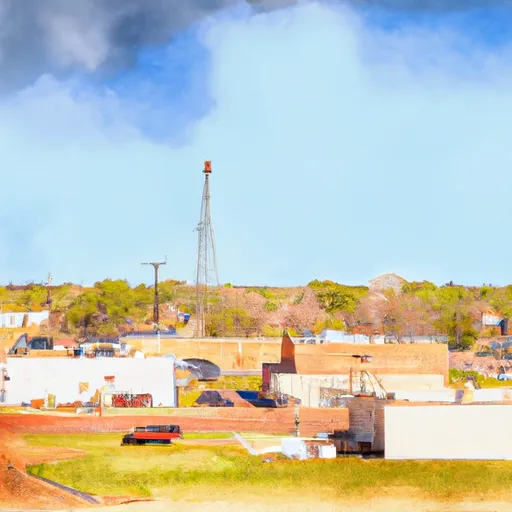-
 Snoflo Premium
Snoflo Premium
Get unlimited access to all our content
With no Ad interruptions! - Start Your Free Trial Login with existing account
Lone-Grove
Eden Index
Climate
9.8
•
Recreation
3.7
•
Community
2.2
•
Safeguard
5.8/10

Lone Grove, Oklahoma is a small, charming town located in south-central Oklahoma. It experiences a humid subtropical climate, characterized by hot summers and mild winters. Summers are typically hot and humid, with temperatures averaging in the high 90s Fahrenheit (around 36-38 degrees Celsius). Winters are mild, with temperatures ranging from the 40s to 60s Fahrenheit (around 4-15 degrees Celsius). The area receives an average annual rainfall of around 40 inches.
Lone Grove is surrounded by natural beauty, with several hydrological features. It is home to numerous creeks, streams, and small lakes, providing ample opportunities for fishing, boating, and other water-based activities. Some popular hydrology constituents include the Washita River and the Ardmore Reservoir.
Outdoor enthusiasts will find a variety of recreational opportunities in Lone Grove. The proximity to the Arbuckle Mountains offers hiking, camping, and wildlife viewing. The nearby Lake Murray State Park provides opportunities for swimming, picnicking, and horseback riding. Additionally, Lone Grove is known for its excellent deer hunting, attracting many hunters during the appropriate seasons.
In summary, Lone Grove, Oklahoma offers a pleasant climate with hot summers and mild winters. The town boasts numerous hydrological features, providing ample water-based recreational opportunities. Furthermore, its proximity to natural areas and state parks offers an array of outdoor activities for nature lovers.
What is the Eden Index?
The Snoflo Eden Index serves as a comprehensive rating system for regions, evaluating their desirability through a holistic assessment of climate health, outdoor recreation opportunities, and natural disaster risk, acknowledging the profound impact of these factors on livability and well-being.
Climate Health Indicator (CHI): 9.8
Lone-Grove receives approximately
948mm of rain per year,
with humidity levels near 77%
and air temperatures averaging around
17°C.
Lone-Grove has a plant hardyness factor of
7, meaning
plants and agriculture in this region tend to thrive during the non-winter months.
By considering the ideal temperature range, reliable water supplies, clean air, and stable seasonal rain or snowpacks, the Climate Health Indicator (CHI) underscores the significance of a healthy climate as the foundation for quality living.
A healthy climate is paramount for ensuring a high quality of life and livability in a region, fostering both physical well-being and environmental harmony. This can be characterized by ideal temperatures, reliable access to water supplies, clean air, and consistent seasonal rain or snowpacks.
Weather Forecast
Streamflow Conditions
Red-Lake Texoma
Area Rivers
Red-Lake Texoma
Snowpack Depths
Red-Lake Texoma
Reservoir Storage Capacity
Red-Lake Texoma
Groundwater Levels
Recreational Opportunity Index (ROI): 3.7
The Recreational Opportunity Index (ROI) recognizes the value of outdoor recreational options, such as parks, hiking trails, camping sites, and fishing spots, while acknowledging that climate plays a pivotal role in ensuring the comfort and consistency of these experiences.
Access to outdoor recreational opportunities, encompassing activities such as parks, hiking, camping, and fishing, is crucial for overall well-being, and the climate plays a pivotal role in enabling and enhancing these experiences, ensuring that individuals can engage in nature-based activities comfortably and consistently.
Camping Areas
| Campground | Campsites | Reservations | Toilets | Showers | Elevation |
|---|---|---|---|---|---|
| Dukes - Lake Murray State Park | None | 803 ft | |||
| Field Trial Area - Lake Murray State Park | None | 799 ft | |||
| Pauls Valley City Lake | 28 | 910 ft | |||
| Buzzards Roost - Lake Murray State Park | None | 764 ft | |||
| Turner Falls Park | 500 | 960 ft | |||
| Elephant Rock - Lake Murray State Park | None | 762 ft | |||
| Tipps Point - Lake Murray State Park | None | 755 ft | |||
| Healdton Municipal Lake | 57 | 900 ft | |||
| Mountain Lake | None | 1,002 ft | |||
| Cedar Grove - Lake Murray State Park | None | 764 ft |
Nearby Fishing
Nearby Ski Areas
Catastrophe Safeguard Index (CSI):
The Catastrophe Safeguard Index (CSI) recognizes that natural disaster risk, encompassing floods, fires, hurricanes, and tornadoes, can drastically affect safety and the overall appeal of an area.
The level of natural disaster risk in a region significantly affects safety and the overall livability, with climate change amplifying these risks by potentially increasing the frequency and intensity of events like floods, fires, hurricanes, and tornadoes, thereby posing substantial challenges to community resilience and well-being.
Community Resilience Indicator (CRI): 2.2
The Community Resilience Indicator (CRI) recognizes that education, healthcare, and socioeconomics are crucial to the well-being of a region. The CRI acknowledges the profound impact of these elements on residents' overall quality of life. By evaluating educational resources, healthcare accessibility, and economic inclusivity, the index captures the essential aspects that contribute to a thriving community, fostering resident satisfaction, equity, and social cohesion.

